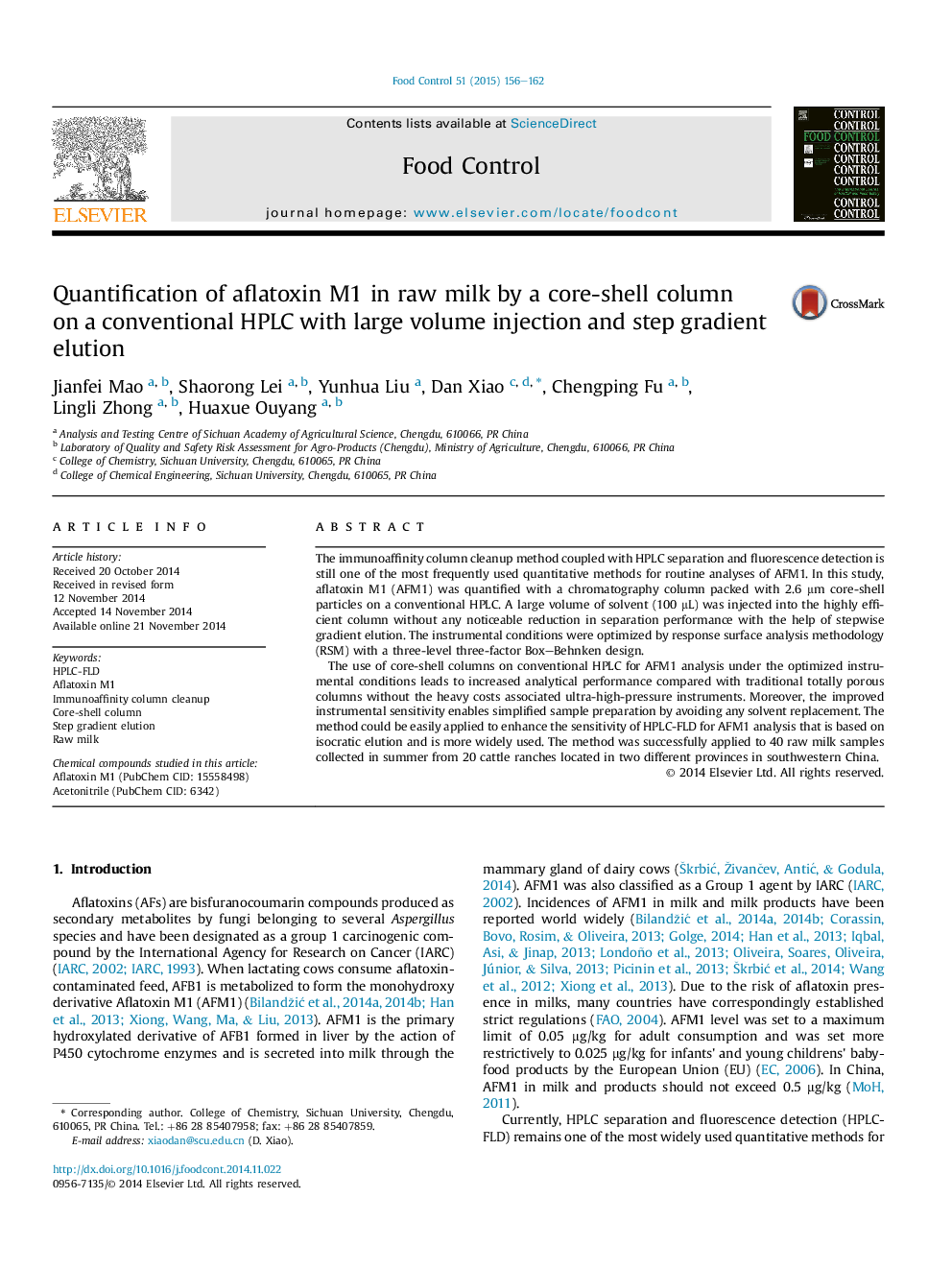| Article ID | Journal | Published Year | Pages | File Type |
|---|---|---|---|---|
| 6390996 | Food Control | 2015 | 7 Pages |
â¢Core-shell column increases analytical performance for AFM1 on HPLC.â¢Large volume diluent (100 μL) was injected with step gradient elution.â¢The method allows hardware savings.â¢Samples were prepared without solvent replacement.
The immunoaffinity column cleanup method coupled with HPLC separation and fluorescence detection is still one of the most frequently used quantitative methods for routine analyses of AFM1. In this study, aflatoxin M1 (AFM1) was quantified with a chromatography column packed with 2.6 μm core-shell particles on a conventional HPLC. A large volume of solvent (100 μL) was injected into the highly efficient column without any noticeable reduction in separation performance with the help of stepwise gradient elution. The instrumental conditions were optimized by response surface analysis methodology (RSM) with a three-level three-factor Box-Behnken design.The use of core-shell columns on conventional HPLC for AFM1 analysis under the optimized instrumental conditions leads to increased analytical performance compared with traditional totally porous columns without the heavy costs associated ultra-high-pressure instruments. Moreover, the improved instrumental sensitivity enables simplified sample preparation by avoiding any solvent replacement. The method could be easily applied to enhance the sensitivity of HPLC-FLD for AFM1 analysis that is based on isocratic elution and is more widely used. The method was successfully applied to 40 raw milk samples collected in summer from 20 cattle ranches located in two different provinces in southwestern China.
